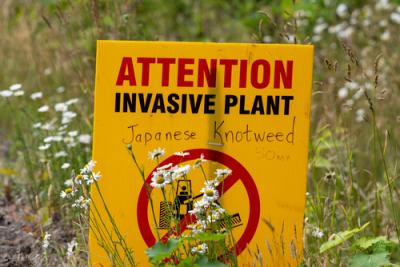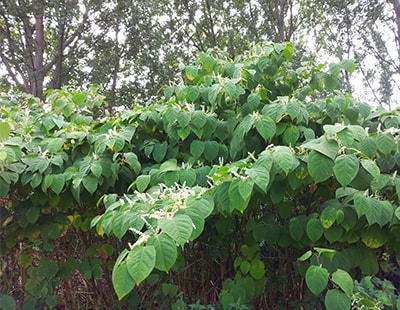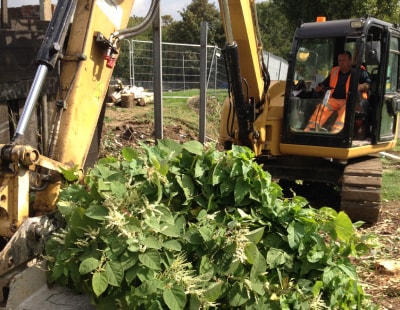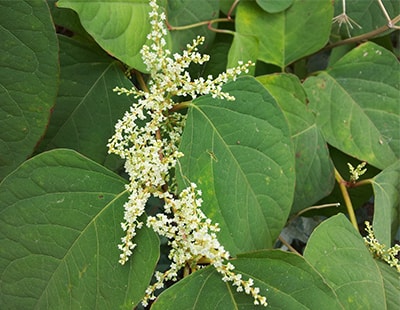
Homebuyers viewing properties during the winter months should be extra watchful for signs of invasive Japanese knotweed, which dies back in late autumn and becomes more difficult to identify – and easier for sellers to conceal.
By the end of November or early December, Japanese knotweed’s above-ground growth will have died back and the leaves will have fallen to the ground, leaving only dead canes remaining. Though it may look dead, knotweed will be replenished with new energy reserves from the summer growth which are drawn down and stored in its powerful underground rhizome system, ready to regrow next spring.
During winter it’s easier for sellers to take advantage of the plant’s seasonal demise, despite the fact it is a legal requirement for homeowners affected by knotweed to declare it on the Law Society’s TA6 form when they sell. Those who answer dishonestly or who fail to carry out proper checks, ticking ‘No’ or ‘Not Known’ in response to the Japanese knotweed question, are putting themselves at risk of future litigation once it’s discovered.
Out of court
Yet there are still thousands of misrepresentation cases brought by disgruntled buyers every year in a bid to recover treatment costs, legal fees and – most significantly - diminution of the property’s value. The vast majority of these claims are settled out of court, for around 50% of the value of the claim, to avoid the risk of running up legal bills into tens or even hundreds of thousands of pounds with no certainty of the outcome.
Risks to homebuyers are considerably greater during winter, when knotweed is easier to hide. As well as removing the dead canes and covering the crowns, we’ve seen cases where it has been covered with decking, had a pathway or patio laid over it, or even a shed.
But knotweed will grow back next spring and when it does, sellers who have been dishonest could find themselves seriously out of pocket. One seller in Raynes Park, London ended up with a £200,000 bill at the start of this year after he was sued for failing to declare knotweed growing behind the shed at the bottom of his garden and the case went all the way to court.
Treatment plan
Buyers viewing properties over the next few months should check carefully for evidence of knotweed and ask their RICS surveyor to be extra vigilant for signs of concealment. If in doubt, commission a specialist to carry out a Japanese knotweed survey, backed by a warranty.
Approximately 5% of UK properties are affected by Japanese knotweed, according to Environet’s research, but it doesn’t have to be a deal breaker when it comes to buying and selling property. As long as a professional treatment plan is in place with an insurance-backed guarantee, most mortgage lenders will offer a loan and the transaction can go ahead.
There are very effective, low-cost treatments that can be undertaken through the autumn and winter, allowing gardens to be fully operational during the summer months. The DART™ method involves excavating the bulk of the knotweed rhizomes from the ground, reducing the plant’s vigour and stimulating growth, enabling any new shoots that emerge the following spring to be herbicide treated.
Top Tips: How to identify Japanese knotweed during winter
- The green, heart-shaped leaves will turn yellow, then brown, before falling from the plant
- The hollow canes will turn brown and die, though they usually remain standing
- The distinctive crowns will remain visible, emerging through the surface of the soil
- In spring, red or purple asparagus-like shoots will grow, quickly forming into green bamboo-like stems.
























Join the conversation
Be the first to comment (please use the comment box below)
Please login to comment